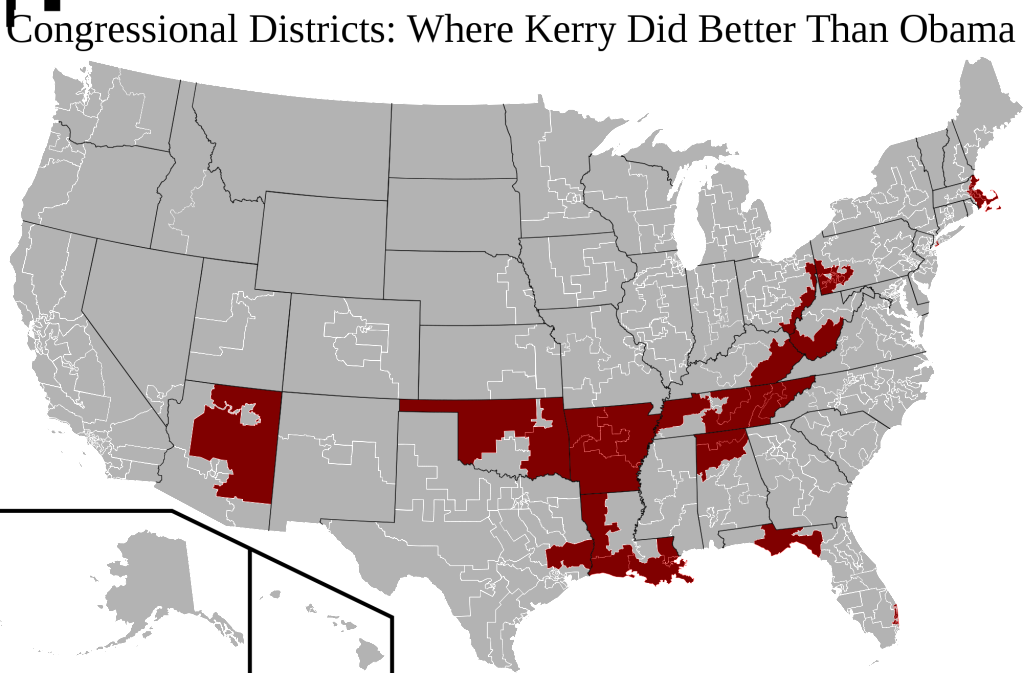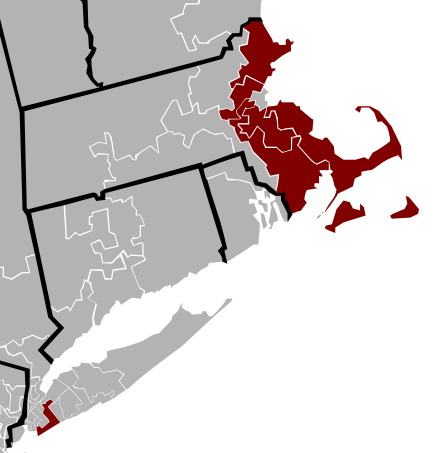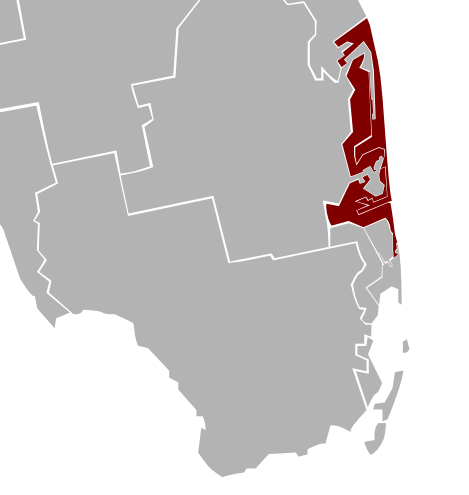This is the second part of three posts analyzing the congressional districts President Barack Obama underperformed in. It will focus on his relative weakness in the northeast. The third part can be found here.
The Northeast
In my previous post I created a map of congressional districts in which Mr. Obama performed worse than Senator John Kerry:
In this map the most obvious pattern is a roughly diagonal corridor of Republican-shifting congressional districts, stretching from Oklahoma and Louisiana through the Appalachians. This area has long been seen as a place in which the electorate is moving away from the Democratic Party.
The post then looked at the Northeast, another region in which Mr. Kerry did better than Mr. Obama.
More below.
Unlike Applachia and the Mississippi Delta, the conventional wisdom characterizes the Northeast as a stable Democratic stronghold. Yet, as the map below indicates, six northeastern congressional districts shifted Republican in 2008:
Much of the movement in Massachusetts, of course, occurs due to the loss of Mr. Kerry’s home-state advantage. Yet the districts in Massachusetts (MA-4, MA-6, MA-7, MA-9, and MA-10) also share a number of commonalities. All are quite suburban, quite wealthy, and quite white. Unlike the Appalachian districts above, these places vote substantially Democratic. Neither Mr. McCain nor former President George W. Bush came within single-digits in any of these districts (I suspect 1988 was the last time a Republican presidential candidate did so). Yet this is also Scott Brown territory; the Republican candidate won four of these districts.
Notice, too, the highlighted New York district (NY-9). Like those in Massachusetts, this district is inhabited mainly by middle-class, Democratic-voting whites. The effect of 9/11, which convinced many New Yorkers to vote Republican, was particularly strong in places like these (in fact, it was probably greater here than anywhere else in the nation). Orthodox Jews, an increasingly Republican demographic heavily represented in this district, have shifted strongly Republican since then.
Indeed, Long Island as a whole was relatively lukewarm towards Obama. Apart from the fighting ninth, Republicans did respectably in NY-3 and NY-5, holding Obama’s improvement to less than 1% in both districts. Like NY-9, these places are wealthy and suburban.
One wonders whether this change is merely a temporary blip or the start of something more worrisome for Democrats. The case of Florida is probably not reassuring:
This is Florida’s Gold Coast – a Democratic stronghold – and three districts here (FL-19, FL-20, FL-22) voted more Republican than in 2004. Mr. McCain’s age probably helped him along here; the large population of retirees may have empathized with one of their own.
Ironically, a large number of these retirees probably came from NY-9 or eastern Massachusetts. Like both areas, these districts vote Democratic but have been slowly moving Republican. FL-22 is the exception, having been not very Democratic to begin with. In FL-19 and FL-20, on the other hand, Democratic candidate Al Gore did substantially better than both Obama and Kerry. This was a function of the substantial Jewish population in these districts; Jews strongly supported Joe Lieberman, his Jewish nominee for Vice President.
Fortunately for Democrats, almost none of the Florida or northeast districts represent a 2010 pick-up opportunity for Republicans. Except for FL-22, all have voted Democratic by double-digits for at least three consecutive presidential elections. A few weeks ago a special election in FL-19 resulted in a 27% Democratic margin victory. It is the long-term that is worth concern for Democrats.
In the short term, Democrats must worry about Appalachia and the Mississippi Delta. There Democrats are in deep, deep trouble for 2010. There are a surprising amount of Democratic representatives in these Appalachian seats where Mr. McCain did better than Mr. Bush. Their predicament will be the subject of the next post.



Yet another superb diary. Well done you.
More of an Obama problem than a Democratic problem. At least in Florida and New York. 9/11 certainly played a part with some Jewish voters. And we know the president stuggled with the older whites in general. I expect much of this is also because Lieberman was on the ticket in 2000. I do think there is some movement to the GOP in MA.
I’m thinking Obama’s apparent Appalachian problems aren’t necessarily Appalachian per se but really problems with rural, Southern whites. It shows up in these Congressional districts because these are districts without enough of the demographics Obama overperformed Kerry and/or increased turnout with (e.g. blacks, Hispanics, students, urbanites, suburbanites) to counter-balance Obama’s underperformance with rural, white Southerners.
For example, in AR-02, Obama overperformed Kerry in only Pulaski County. This county is urban (Little Rock), has a substantial black population, and has some sizable colleges. By comparison, the other counties are more rural and far more white.
Look at GA-09, though. Obama lost ground in many of the counties (e.g. Dade, Walker). However, he gained ground in the district as a whole due to gaining in several of the larger, more diverse, suburban counties (e.g. Forsyth, Hall, Whitfield).